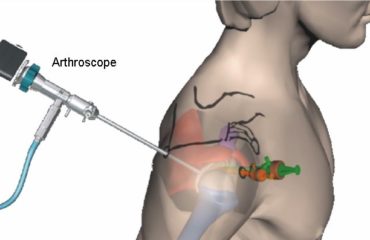Did you know that almost 5% of adults will develop frozen shoulder at some point in their lifetime? The incredibly debilitating disorder can leave people in constant pain with little movement on their shoulder. But now a new technique could provide almost instant relief!
 What Is Frozen Shoulder?
What Is Frozen Shoulder?
Frozen shoulder is known in the medical community as adhesive capsulitis. We don’t know exactly what causes it but the shoulder joint capsule becomes incredibly inflamed. This results in adhesions forming between the joint and the bone meaning patients experience pain on movement and restriction in what movements they can do.
What treatment is currently available for frozen shoulder?
There are no hard and fast fixes for frozen shoulder at the moment. It typically takes months to a year to heal fully. However, your doctor is likely to recommend:
- Pain relief in the form of non-steroidal anti-inflammatory drugs like ibuprofen. These can reduce inflammation and thus pain.
- Steroid injections can also provide more powerful anti-inflammatory effects and are used in patients that don’t get relief from NSAIDs.
- Physiotherapy can also be helpful to get movement back in the shoulder.
What is Hydrodilatation?
Hydrodilatation is similar to a steroid injection but could give pain relief in just 15 minutes. The technique injections saline and steroid into the joint – stretching it to ease pain and increased movement of the joint. A new study on the technique is to be published in the Journal of Orthopaedics and involved 350 participants.The study found that the technique helped almost 85% of patients return to their previous level of activity within just 6 weeks. Talking to the DailyMail Professor Lennard Funk, a consultant in orthopedic surgery said of the study.
“Patients with frozen shoulder often cannot sleep or cope with the pain, and painkillers generally do little to help…Now they can be offered a simple injection to improve their range of movement as well as relieving the pain. It also works immediately, sparing them from invasive surgery.’ First, a local anesthetic is injected into the back of the shoulder. Then a mixture of saline and steroid is inserted directly into the joint using ultrasound images to guide the clinician – usually a radiologist or surgeon. Depending on the size of the joint, around four tablespoons of the solution are used”
One of the first patients to undergo the procedure also spoke to the DailyMail, saying
“At first I thought I’d pulled a muscle in the gym, but over the next few weeks, it got worse… When I was handling sheep, they’d jump and wrench my shoulder – and the pain was so bad at night I couldn’t sleep properly.”
Of the procedure she said
“The pain went instantly and I could raise my arm again, whereas before I could only lift it as high as my waist…The difference is amazing.’
This new technique could provide more instant relief for millions of Americans across the United States. Until it is widely available, specialist clinics are a patient’s best bet as they provide more personalized treatment than in family practice.


